How to measure current with a multimeter

Amperage, along with voltage and resistance, is a very important concept in electricity. It is measured in amperes and is determined by the amount of electrical energy passing through a conductor in a certain unit of time. Its value is determined with the help of measuring instruments; at home, this is easiest to do with a multimeter, or a tester, available to many owners of modern apartments. Controlling the current strength is very important for the operation of mechanisms that depend on the power supply, since exceeding the maximum allowable value leads to device breakdown and the occurrence of emergency situations. The topic of this article is how to measure current with a multimeter.
Content
Types of multimeters
There are two types of testers on the modern electrical appliance market:
- Analog.
- Digital.
The main elements of analog devices are a scale with marked divisions, which are used to determine the indicators of electrical quantities, and an arrow-pointer. These multimeters are in high demand among beginners due to their low cost and ease of use.
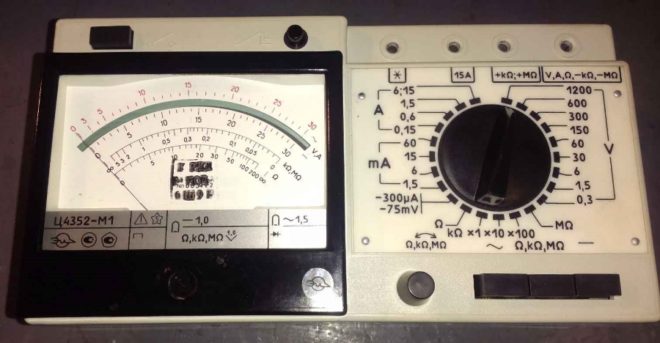
But, along with these positive aspects, analog testers also have a number of disadvantages, the main of which is the high measurement error. It can be somewhat reduced due to the tuning resistor, which is structurally included in the device. Nevertheless, if it is necessary to measure electrical parameters with high accuracy, it is better to use a digital device.
Digital multimeters
The only external difference between a digital apparatus and an analog one is the screen on which the measured parameters are reflected in the form of numbers. Older models are equipped with an LED display, newer types are equipped with a liquid crystal display.
They are distinguished by high measurement accuracy and ease of use, since they do not need to adjust the calibration.
The disadvantage of these devices is the price, which is several times higher than the cost of analog testers.
Design features
Regardless of the number of jacks in the multimeter, each of these devices has two types of outputs, which are indicated by different colors. The general output (mass) is colored black and is designated either "com" or "-". The output intended for measurement (potential) is red. For any of the measured parameters of the electrical circuit, there can be its own socket.
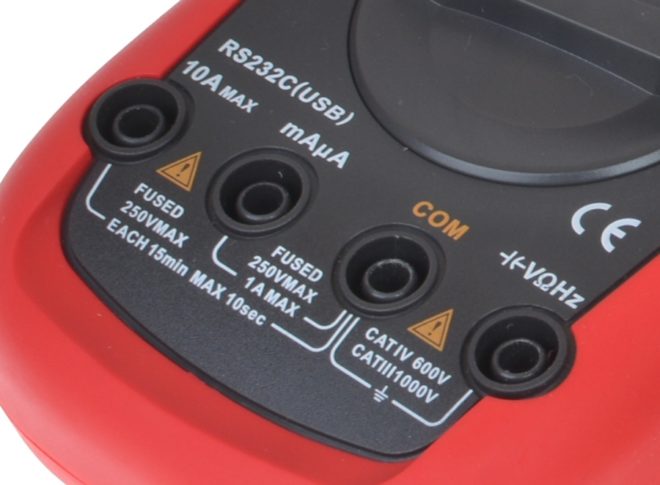
Do not be afraid to confuse it with others, since each of these nests is indicated by a corresponding unit.
Another external element of the device is a handle for setting the measurement limit, which can be rotated in a circle. On digital multimeters, these limits are greater than on analog ones, in addition, additional options may be included in them, for example, a sound signal and others. Since we are talking about how to measure the current strength with a tester, we will talk about a scale with amperes.
Each multimeter has its own maximum current limit, and when choosing an electrical network for testing, the current being tested in it should be compared with the limit for which the device is designed. So, if the current flowing inside the electrical circuit is 180 A, it is not recommended to measure with a multimeter designed for 20 A, since the only result obtained will be the combustion of the device immediately after the start of testing. The maximum limit is always indicated in the passport of the multimeter or on the case of the device.
The procedure for preparing the device for measurements
The switch of the multimeter must be switched to sector A (DA for DC or CA for AC), which corresponds to the current measurement, while choosing the desired limit. Some modern testers for DC circuits have one position, and for AC, another. In order not to be mistaken, you need to navigate by the letters available on the front panel.
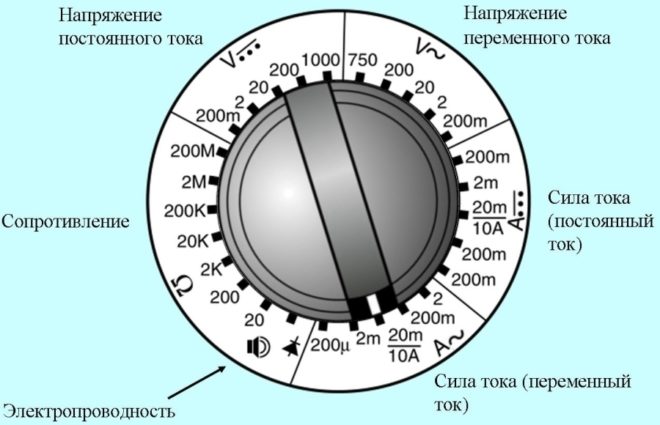
They are the same in any device, you just need to understand what value each of them means.
All multimeters come with two cables, each with a probe and connector at the end. The second ends of the wires are inserted into the sockets of the device, which correspond to the current measurement, in our case, the current strength.
Measurement order
A multimeter for measuring the magnitude of the current is included in the break of the electrical circuit. This is the main difference from the voltage measurement procedure, in which the tester is connected to the string in parallel. The indicator of the magnitude of the current that passes through the device is displayed by an arrow on the scale (if we are talking about an analog device) or is displayed on the liquid crystal (LED) display.
There are different ways to break the circuit under test to include the device in it. For example, by disconnecting one of the terminals of the radio element with a soldering iron.
Sometimes you have to bite the wire with wire cutters or pliers.
When determining the magnitude of the current of a battery or accumulator, such a problem does not exist, since a circuit is simply assembled, one of the elements of which is a multimeter.
Considerations when measuring
An important condition in determining the current strength is the inclusion of a limiting resistance in the chain - a resistor or an ordinary light bulb. This element will protect the device from damage (combustion) due to the flow of electrons.
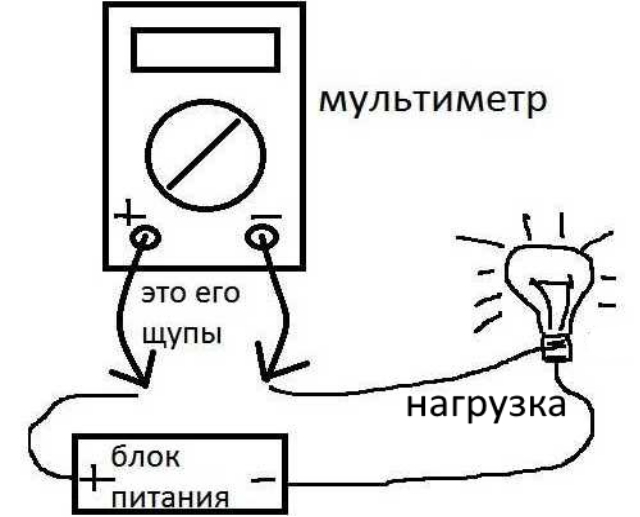
If the current strength is not displayed on the indicator, this indicates an incorrectly selected limit, which must be reduced by one position. If there is no result again - one more, continuing until a value is displayed on the screen or scale.
You need to take measurements quickly - the probe should not contact the cable for more than one or two seconds. This is especially true for low-power batteries. If, while measuring the current strength of the batteries, keep the probe on the wire for a long time, the result will be their discharge - partial or complete.
Safety engineering
As you can see, the procedure for measuring the current strength with a multimeter is not difficult. It is only important to follow the instructions and not forget about strict adherence to safety measures:
- Disconnect the power supply before taking measurements.
- Check the insulation of cables - with prolonged use, its integrity is sometimes broken, and the likelihood of electric shock increases significantly.
- Wear rubber gloves only.
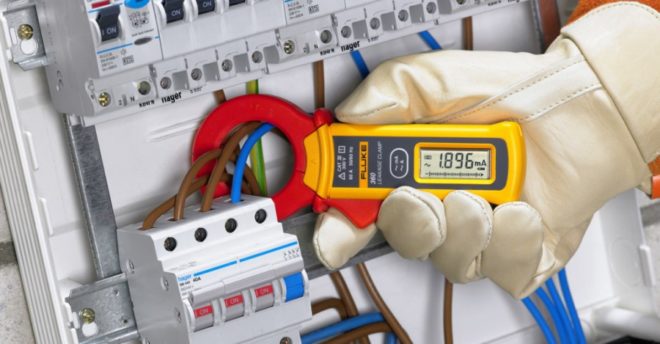
- Do not measure at high humidity. The fact is that moisture has a high electrical conductivity and the risk of injury also increases.
- A person who has suffered an electric shock needs medical attention. If possible, any work with electricity, including measurements, is best done together. In an emergency situation, the presence of a partner can be a real salvation.
After completing the measurements, the cut cables must be reconnected, having previously de-energized the circuit again.
In detail and clearly about the measurements carried out with a multimeter in the video:
Conclusion
In this article, we figured out how to check the amperage with a multimeter. After reading the material presented, any adult will be able to cope with this task, since a multimeter is a completely uncomplicated device, but at the same time it is very necessary for solving not only professional, but also household tasks related to electricity.




